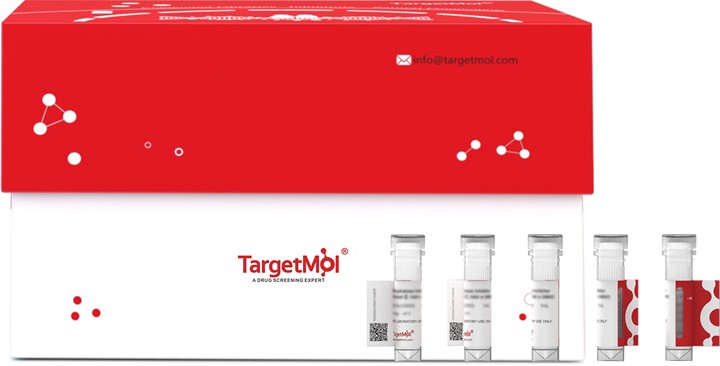购物车
全部删除  您的购物车当前为空
您的购物车当前为空
别名 γ-trace, Post-γ-globulin, Post-gamma-globulin, Neuroendocrine basic polypeptide, Gamma-trace, Cystatin-3, ARMD11
CST3 Protein, Human, Recombinant is expressed in E. coli expression system. The predicted molecular weight is 14 KDa and the accession number is P01034.

CST3 Protein, Human, Recombinant is expressed in E. coli expression system. The predicted molecular weight is 14 KDa and the accession number is P01034.
| 规格 | 价格 | 库存 | 数量 |
|---|---|---|---|
| 5 μg | ¥ 693 | 6-8日内发货 | |
| 10 μg | ¥ 1,170 | 6-8日内发货 | |
| 20 μg | ¥ 1,860 | 5日内发货 | |
| 50 μg | ¥ 3,470 | 5日内发货 | |
| 100 μg | ¥ 5,180 | 5日内发货 | |
| 200 μg | ¥ 7,730 | 5日内发货 | |
| 500 μg | ¥ 13,200 | 5日内发货 | |
| 1 mg | ¥ 18,900 | 5日内发货 |
| 产品描述 | CST3 Protein, Human, Recombinant is expressed in E. coli expression system. The predicted molecular weight is 14 KDa and the accession number is P01034. |
| 生物活性 | Activity has not been tested. It is theoretically active, but we cannot guarantee it. If you require protein activity, we recommend choosing the eukaryotic expression version first. |
| 研究背景 | Cystatin C is a member of family 2 of the cystatin superfamily. It is ubiquitous in human tissues and body fluids and mainly used as a biomarker of kidney function. Cystatin C inhibits many cysteine proteases such as papain and Cathepsins B, H, K, L and S. As an inhibitor of cysteine proteinases, Cystatin C is thought to serve an important physiological role as a local regulator of this enzyme activity. Recently, it has been studied for its role in predicting new-onset or deteriorating cardiovascular disease. It also seems to play a role in brain disorders involving amyloid (a specific type of protein deposition), such as Alzheimer's disease. |
| 种属 | Human |
| 表达系统 | E. coli |
| 标签 | Tag Free |
| 蛋白编号 | P01034 |
| 氨基酸序列 | Gly26-Ala146 |
| 蛋白构建 | Gly26-Ala146 |
| 蛋白纯度 | Greater than 95% as determined by reducing SDS-PAGE. (QC verified) |
| 缓冲液 | Lyophilized from a solution filtered through a 0.22 μm filter, containing 20 mM Hepes, 150 mM NaCl, 1 mM EDTA, 5% sucrose, pH7.4. |
| 复溶方法 | Reconstitute the lyophilized protein in distilled water. The product concentration should not be less than 100 μg/ml. Before opening, centrifuge the tube to collect powder at the bottom. After adding the reconstitution buffer, avoid vortexing or pipetting for mixing. |
| 别名 | γ-trace, Post-γ-globulin, Post-gamma-globulin, Neuroendocrine basic polypeptide, Gamma-trace, Cystatin-3, ARMD11 |
| 内毒素 | < 0.1 ng/µg (1 EU/µg) as determined by LAL test. |
| 分子量 | 14 KDa (reducing condition) |
| 运输方式 | In general, Lyophilized powders are shipping with blue ice. Solutions are shipping with dry ice. |
| 存储 | Lyophilized powders can be stably stored for over 12 months, while liquid products can be stored for 6-12 months at -80°C. For reconstituted protein solutions, the solution can be stored at -20°C to -80°C for at least 3 months. Please avoid multiple freeze-thaw cycles and store products in aliquots. |
对于不同动物的给药剂量换算,您也可以参考 更多